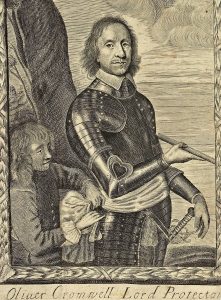English Civil Wars – The Battles
“Tell your wives and children you have been to Powick, where England’s sorrow began and where they were happily ended” Hugh Peters, Puritan preacher.
The English Civil Wars 1642-1651, fought between King and Parliament, affected large parts of Britain. It was particularly significant in Worcester, with first skirmish and the last battle taking place here, with some of the action taking place on Powick Hams.
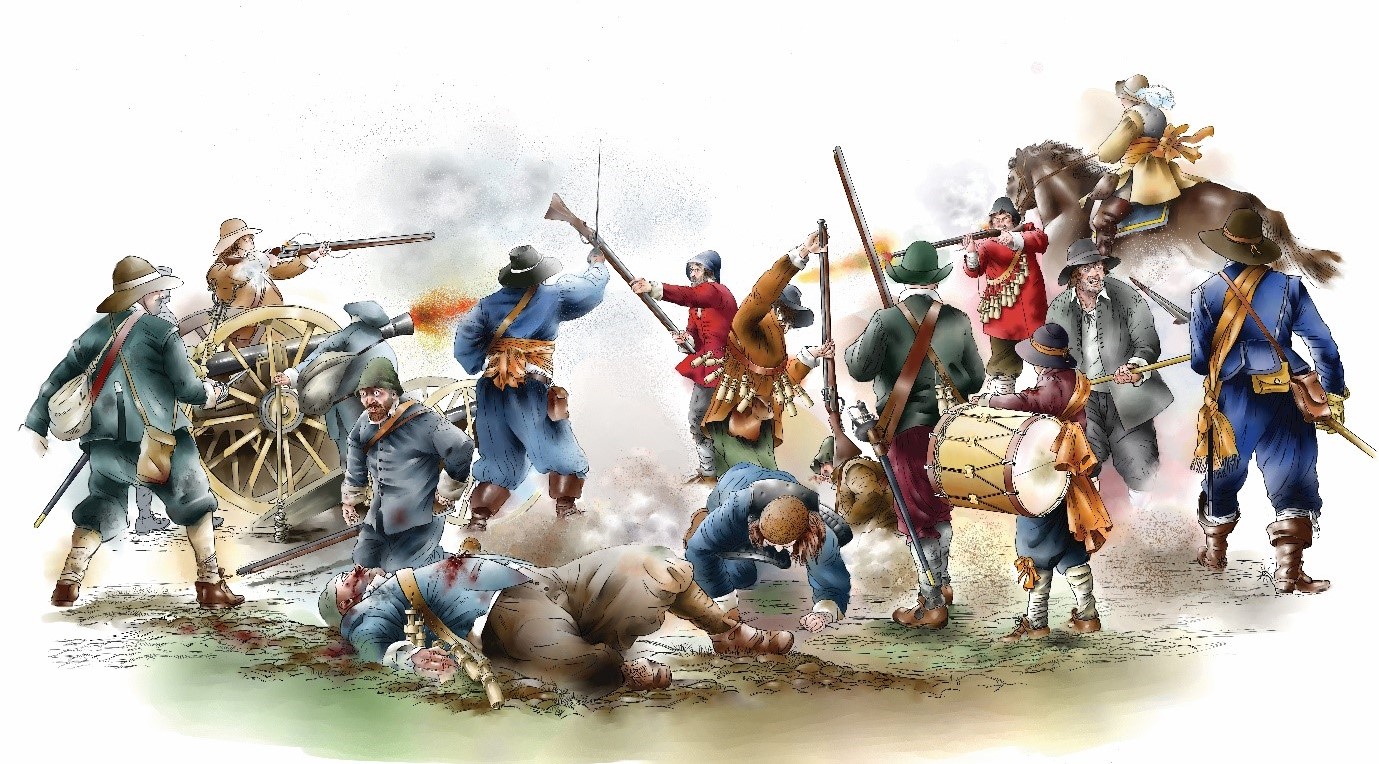
Civil War battle scene by Steve Rigby
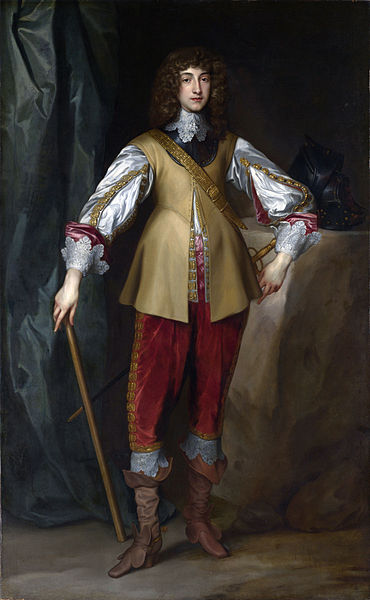
Prince Rupert. Used under Creative Commons
Battle of Powick Bridge 23 Sept 1642
After a summer of gathering forces the armies began moving.
A Royalist force arrived in Worcester escorting money, followed by an advance of the Parliamentary army, who went to Powick Bridge to stop the Royalists escaping eastwards. The King sent Prince Rupert with 1,000 men to protect the money, and they set up just north of Powick Bridge.
The Parliamentarian army advanced over Powick Bridge. Shot at by dragoons from the hedges the army advanced, but whilst only half the army was set up Prince Rupert charged. After some fighting the Parliamentarians retreated over Powick Bridge and fled back to Pershore. Prince Rupert continued to Worcester and then Shrewsbury with the money.
The Civil War continued for the next few years, with Worcester controlled by the Royalists for most of this time. In 1646, as the First Civil War came to an end, Worcester was surrounded by a Parliamentarian army. Some of the soldiers may have camped in the area in front of us. The city surrendered on 23 July 1646.
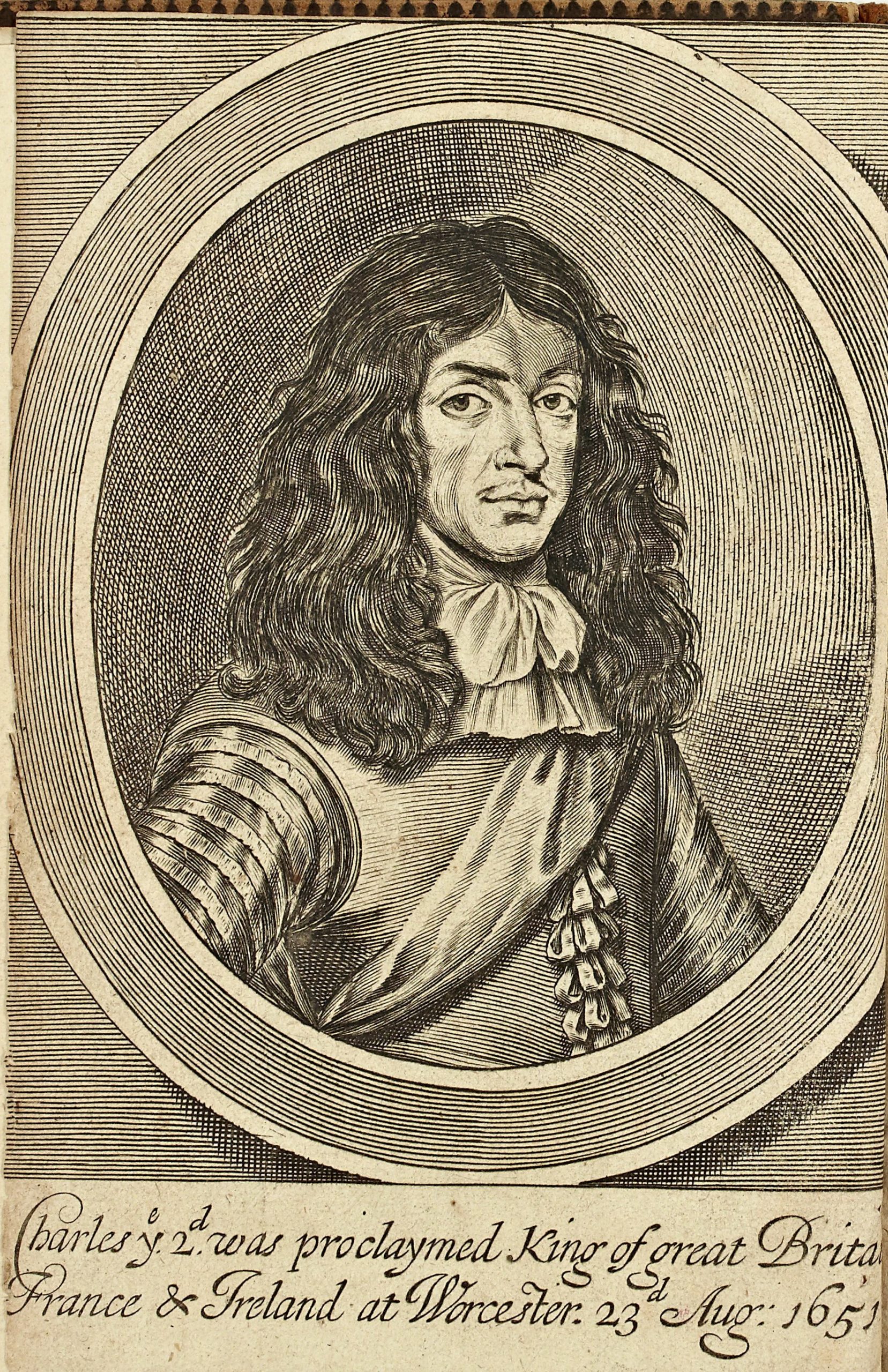
Charles II, taken from book
Battle of Worcester 3 Sept 1651
Prince Charles, proclaiming himself King after his father, Charles I, died in 1649, raised an army in Scotland. He marched south to claim the crown, hoping people would support him. He came to Worcester on 23 August. With three Parliamentarian armies approaching Charles prepared to make a stand. Charles had 12,000 men, which was outnumbered by the 28,000 commanded by Oliver Cromwell.
To blockade the Royalists a Parliamentary force crossed the river at Upton and advanced up toward Worcester. Cromwell order a bridge of boats to be constructed so his men could cross the Teme and Severn just north of where you stand.
On the 3rd September Cromwell ordered the attack on Worcester. The army at Upton advanced towards Powick, facing resistance from Royalist dragoons using the hedges as cover. At the same time Cromwell sent another group over the bridge of boats to support them. The Royalists were slowly pushed back to the Teme and beyond, and another Parliamentarian force came from the west to help encircle the Royalists. Artillery was on a rise on the east of the Severn (to your right), firing down onto Wick fields. The Royalist dragoons using hedges as cover were forced back by the advancing army, and fierce fighting took place, until the Royalists retreated to Worcester.
Despite a Royalist counter attack they were doomed and after Fort Royal was captured it’s guns were turned on the city, Sidbury Gate (by The Commandery) was stormed, and Worcester fell. Charles managed to escape just in time. Part of The Monarch’s way, which commemorates his escape to the south coast then to France, goes through the site in front of you. 3,000 Royalist soldiers died, and many more were taken prisoner. There were no more serious armed uprisings and the Civil Wars ended. In 1658 Cromwell died, and in 1660 Charles II returned to England to be proclaimed King.
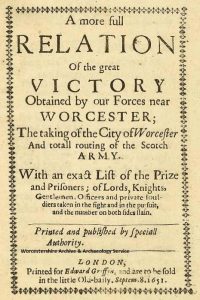
Pamphlet published on 8 September giving details of the Battle. Held within the county archives, Worcestershire Archive & Archaeology Service. BA3669/2(vi)
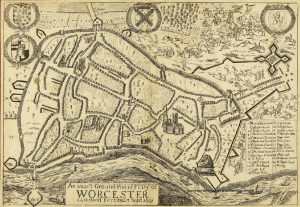
Map of Worcester as it was 3 September 1651, from a book in 1660, held by Worcestershire Archive & Archaeology Service. Ref: 899:25, BA372/1].
